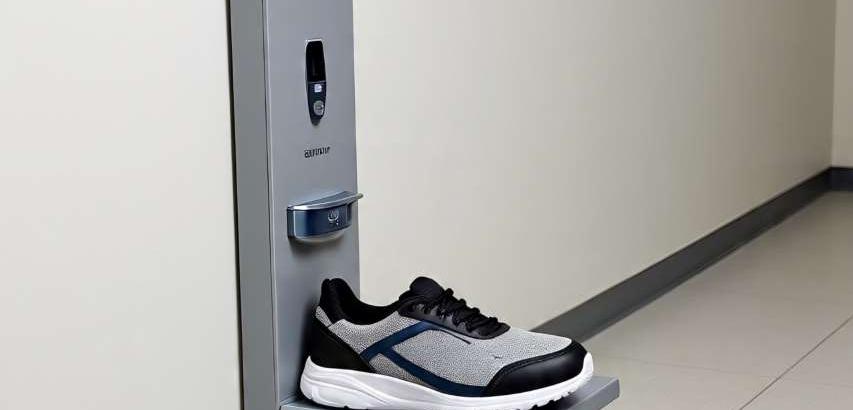
An automatic shoe cover dispenser is a modern and innovative device designed to automatically apply shoe covers without the need to bend, squat, or use your hands. It is widely used in hospitals, laboratories, clean rooms, factories, offices, hotels, showrooms, and homes where hygiene and cleanliness are essential.
These machines save time, effort, and ensure sanitary conditions by providing a hands-free and efficient way to keep floors clean and protected from dirt, dust, and contaminants. In this detailed guide, we’ll cover how it works, its features, types, benefits, usage instructions, maintenance tips, and buying advice.
How an Automatic Shoe Cover Dispenser Works
The device is designed with a spring-loaded or sensor-based mechanism that automatically wraps a shoe cover around your footwear when you step into the machine. Here's the basic process:
Load the Shoe Covers → Insert a roll or stack of shoe covers into the dispenser.
Step into the Machine → Simply place your foot inside the opening.
Automatic Wrapping → The device quickly covers your shoe without bending down.
Hands-Free Operation → No need to touch the shoe covers manually, maintaining hygiene.
Some advanced models are fully electronic and use infrared sensors to detect the shoe and automatically dispense the cover, while others are mechanical and rely on a simple pressure-based mechanism.
Key Features of Automatic Shoe Cover Machines
Hands-Free and Hygienic
Eliminates the need to touch shoe covers with your hands.
Reduces cross-contamination and maintains a sterile environment.
Fast and Convenient
Covers shoes in just 1–3 seconds, saving time in busy environments.
Ideal for high-traffic areas like clinics, clean rooms, and offices.
Compact and Portable Design
Lightweight and easy to place near entrances, doorways, or hallways.
Some models come with non-slip bases for added stability.
Durable and High-Quality Materials
Built with ABS plastic, stainless steel, or aluminum alloys for longevity.
Resistant to wear, tear, and constant usage in commercial settings.
Large Capacity
Can hold 30 to 100+ covers at once, depending on the model.
Suitable for both small offices and large industrial environments.
Energy-Efficient Options
Mechanical dispensers require no electricity.
Electronic models are low-power and often battery-operated or USB-rechargeable.
Types of Automatic Shoe Cover Dispensers
Mechanical Dispensers
Operate without power or batteries.
Rely on a spring or pressure-based mechanism.
Cheaper, durable, and ideal for home or small office use.
Semi-Automatic Dispensers
Require minimal manual assistance to load or trigger the cover.
Faster than fully manual methods but slower than fully automatic machines.
Fully Automatic / Sensor-Based Dispensers
Equipped with infrared sensors to detect foot placement.
Automatically dispense and secure the shoe cover.
Best for hospitals, laboratories, and high-demand facilities.
Benefits of Using an Automatic Shoe Cover Machine
Enhanced Hygiene → Reduces spread of germs and bacteria.
Saves Time & Effort → Instantly applies covers without bending.
Professional Appearance → Ideal for offices, hotels, and clinics.
Protects Floors → Prevents dirt, water, and debris from damaging flooring.
Cost-Effective → Reduces waste since the covers are applied perfectly every time.
How to Use an Automatic Shoe Cover Dispenser (Step by Step)
Step 1: Load the Covers
Place the roll, cartridge, or stack of shoe covers into the machine according to the user manual.
Step 2: Power On (For Automatic Models)
If using an electronic model, switch on the power or ensure batteries are charged.
Step 3: Place Your Foot
Step into the machine’s opening carefully, keeping your balance.
Step 4: Automatic Covering
The dispenser wraps the shoe cover around your foot in seconds.
Step 5: Repeat for the Other Foot
Simply repeat the same process for the second shoe.
Maintenance and Cleaning Tips
Regularly Refill Covers → Check capacity and reload before it runs out.
Clean the Exterior → Wipe with a soft cloth and mild cleaner.
Avoid Overloading → Follow the manufacturer’s cover capacity guidelines.
Check Moving Parts → Lubricate or replace components if the dispenser jams.
Battery Care (For Electronic Models) → Keep batteries charged or replace them as needed.
Buying Guide: How to Choose the Best Automatic Shoe Cover Machine
Usage Environment
For homes or small offices → Go for a mechanical dispenser.
For hospitals or labs → Choose a fully automatic, sensor-based model.
Capacity
Low-traffic areas → 30–50 covers.
High-traffic areas → 80–150+ covers.
Build Quality
Stainless steel and ABS plastic models last longer than cheaper alternatives.
Size and Portability
Compact models work well in small spaces, while larger ones suit industrial facilities.
Budget
Mechanical models: Low cost.
Fully automatic models: Higher cost but more efficient.
An automatic shoe cover dispenser is an innovative, practical, and hygienic solution for maintaining cleanliness in homes, offices, hospitals, laboratories, and other professional environments. By automating the process of applying shoe covers, it saves time, ensures sanitation, and provides convenience for both staff and visitors.
Whether you choose a mechanical or fully automatic model depends on your budget, traffic volume, and cleanliness requirements. Investing in one ensures a cleaner, safer, and more professional-looking space.
 | 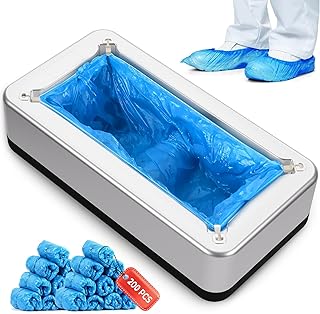 | 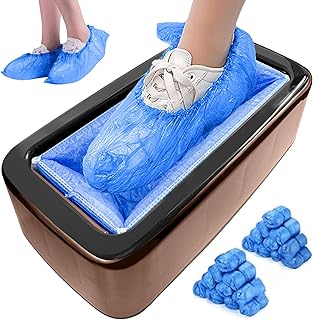 |
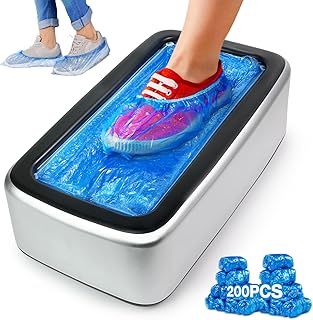 | 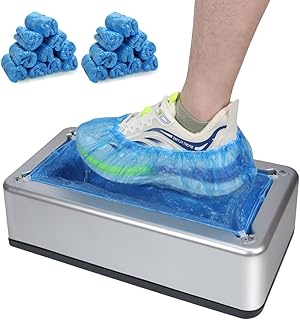 |  |